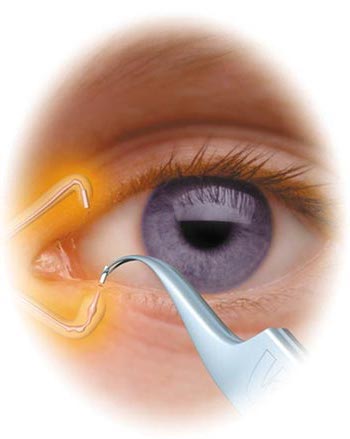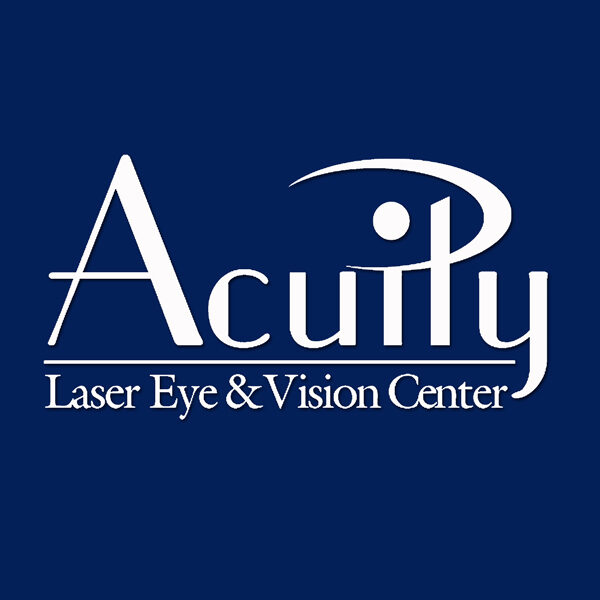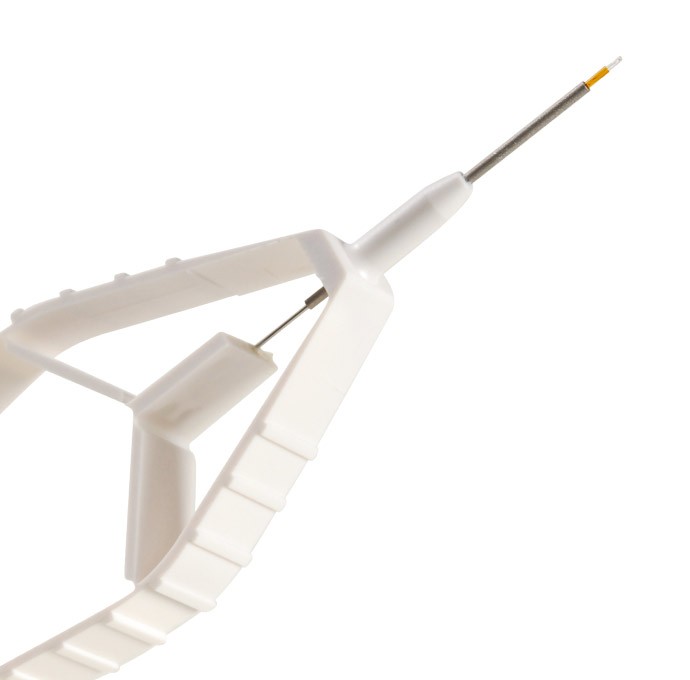Why Dry Eye Occurs After LASIK…
by Steven Vale, M.D.

A dissolvable collagen plug can be placed in either the inferior or superior lacrimal punctum to decrease the rate of drainage of tears from the eye.
Dry eye is a common problem after laser vision correction, particularly following LASIK. With LASIK, the cutting of the flap results in approximately 85% of the corneal nerves, which sense dryness, being severed. These nerves are the primary motivators in the production of tears through a reflex arc that tells the Lacrimal Center in the brain that the eyes are dry and tears need to be produced. Once severed, these corneal nerves need to grow back in order for the normal sensation of dryness to return. This generally takes anywhere from 3 to 6 months, with the latter being more common. PRK and Ep-LASIK are characterized by much less dryness than LASIK, as no flap cutting is performed. Hence, the majority of the corneal nerves are preserved during laser vision correction, although a few nerve endings may be ablated during the excimer laser portion of these procedures. Generally, individuals with pre-exisitng severe dry eye should refrain from having LASIK and have only advanced surface ablation procedures such as PRK and Epi-LASIK, so that their dry eye is not made worse by laser vision correction surgery.
Resulting dryness after LASIK can be a problem, particularly in those accustomed to working in dry environments, those non-compliant with artificial tear use after surgery, those who take medications such as diuretics and anti-histamines that have the side effect of decreasing tear production and those who have inflammatory eyelid conditions such as Blepharitis and Meibomianitis, that have not been resolved prior to eye surgery. In many cases, temporary or permanent occlusion of the lacrimal drainage system can aid in resolving dry eye issues after LASIK, and even in PRK and Epi-LASIK.
Options for Punctal Occlusion
A variety of plugs to facilitate this occlusion have been developed over the years. These plugs fall into 3 general categories, Collagen or other biodegradable plugs, silicone punctal plugs, and intra-canalicular plugs made from hydrogel, the same material that contact lenses are produced from. It’s also possible to permanently occlude the tear ducts with thermal cautery in rare cases where the dry eye is so severe that it can not be managed sufficiently with less aggressive methods.
Punctal Plugs
Punctal plugs, or lacrimal plugs, are tiny biocompatible devices placed in the tear ducts (punctum) to block drainage during a procedure called punctal occlusion. This blockage helps keep the eyes moist by retaining more of the tears or any artificial tears that the dry eye patient may be using. These plugs are removable when your condition improves. The biodegradable ones dissolved over a period of 45 to 60 days
I sometimes first attempt a punctal occlusion with collagen or extended biodegradable material as a solution that has the least permanence first, to see if it benefits the patient. If it does, a more permanent version may be selected later if needed. Sometimes, the dryness after laser vision correction is self-limited enough that biodegradable plugs are all that is needed.
We also have the option of using five different types of semi-permanent punctual plugs:
- Umbrella or Mushroom cap: These plugs are visible in the tear duct

Hydrogel punctal plugs like the one seen on the tip of this insertion device offer a permanent solution for dry eye and are very comfortable as well.
and easy to remove.
- Hollow: This shape helps the plugs stay in place, conforming to the shape of your tear duct.
- Tapered: This shape keeps the plug in place by exerting pressure horizontally.
- Slanted or low profile cap: These plugs provide extra stability and comfort.
- Intracanalicular: These plugs swell once placed into the tear ducts. They are essentially permanent but can be removed if needed by irrigating the lacrimal system with a pressurized cannula.
Thermal Cautery
I can also offer a more permanent solution called thermal cautery. This procedure uses heat to permanently block the opening to the tear drainage system, forcing the tears you produce naturally and artificial tears to stay in your eye.
None of these solutions provide total relief from the regimen of artificial tears, however. Patients still need to use artificial tears to varying degrees to supplement their own tear production. These procedures assist in keeping the eyes sufficiently moist for comfort, good vision and prevention of infection.
Plug Installation
Prior to the procedure, we measure the size and shape of your tear ducts using a special instrument. This helps determine which type to use, and where to place them for maximum benefit. Before the procedure, I instill a local, topical anesthetic for greater comfort. The procedure, done in the office or in the laser suite after the laser vision correction procedure, takes only minutes to complete with little to no discomfort.
Each of the eyes has two punctum, one in each eyelid. Plugs can be inserted in one or both. I also sometimes use a special instrument to enlarge the punctum, making insertion easier. Most often, this procedure is quick and painless. After the process, patients can go home to resume normal activities almost immediately.




Comments are closed